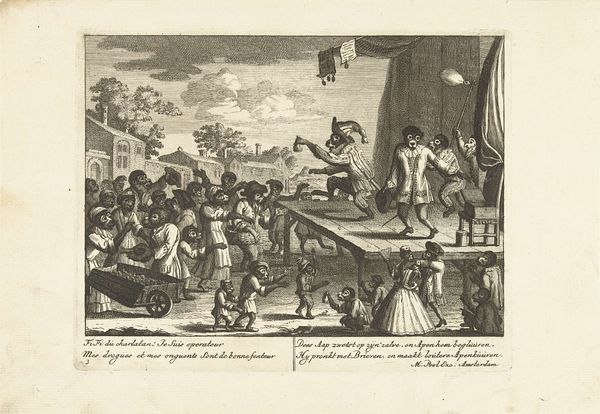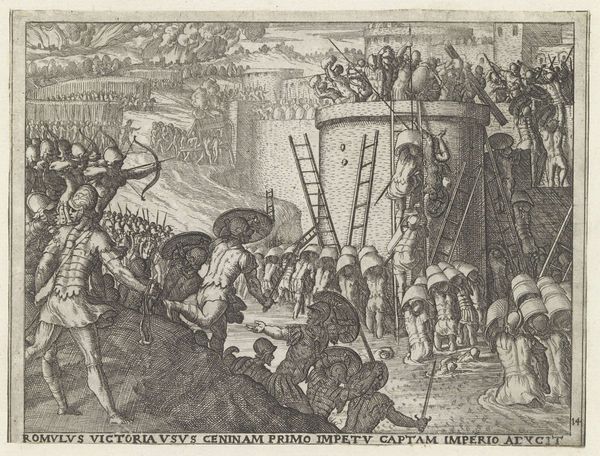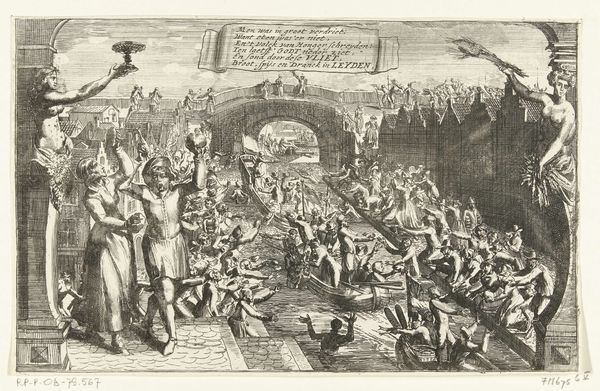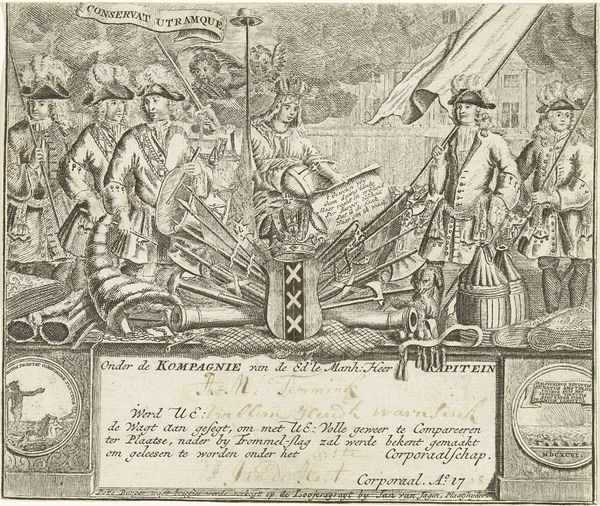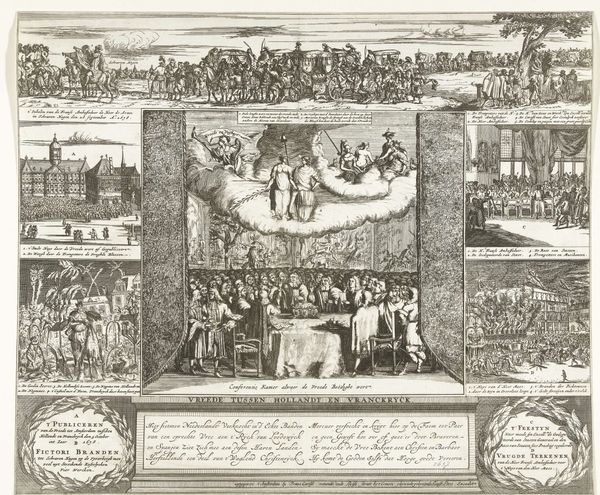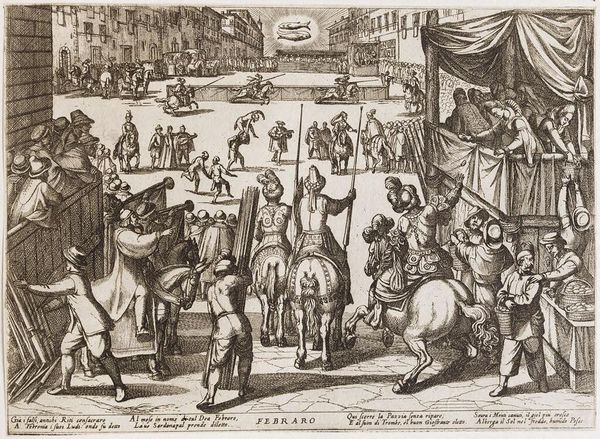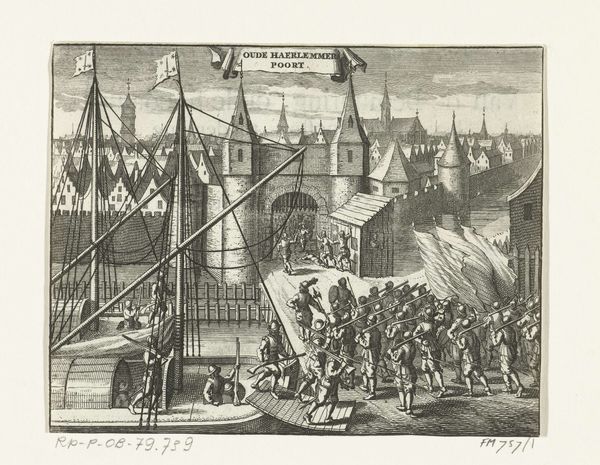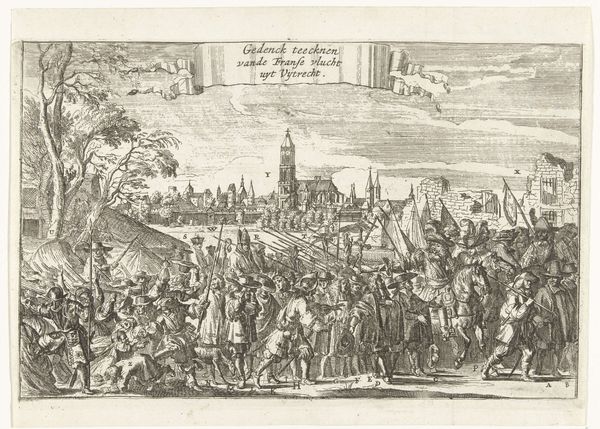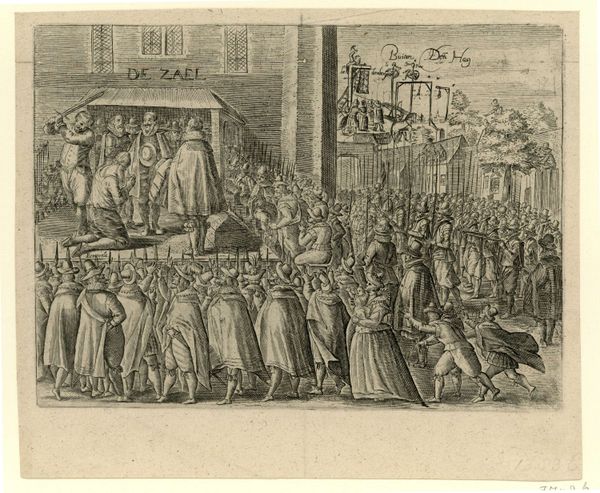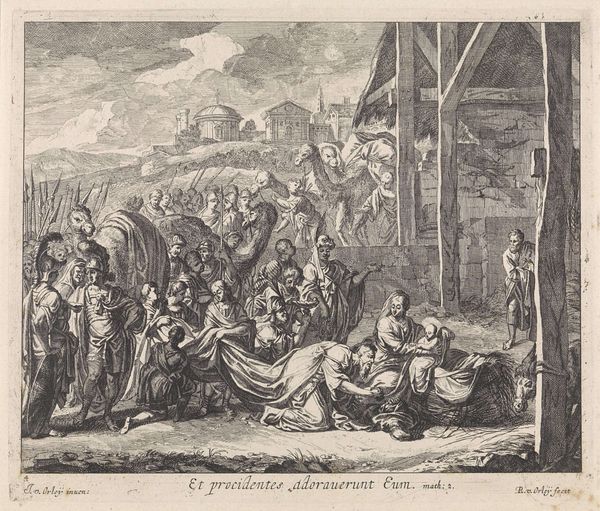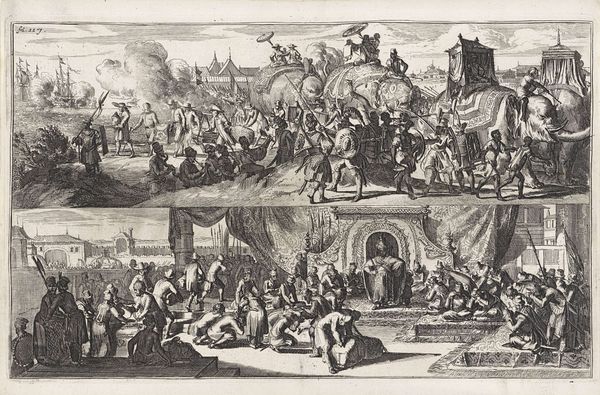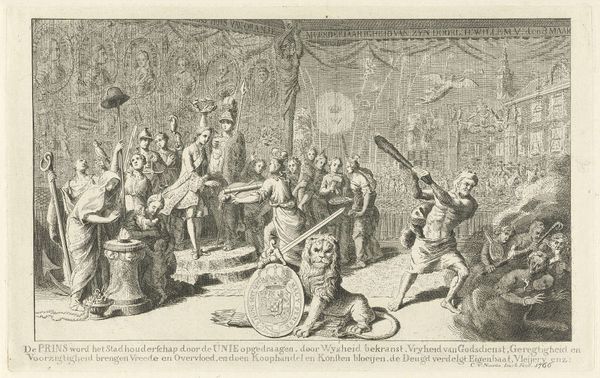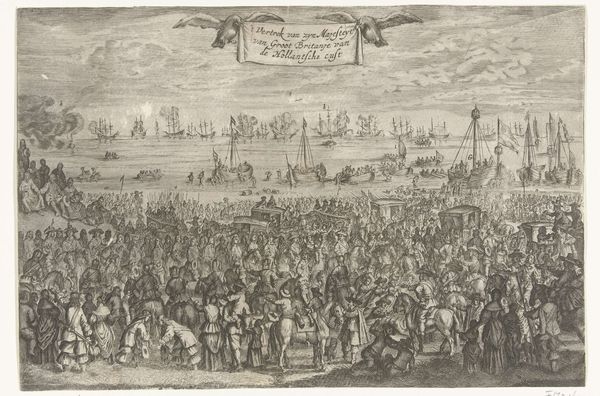
print, engraving
#
allegory
# print
#
genre-painting
#
history-painting
#
engraving
Dimensions: height 121 mm, width 195 mm
Copyright: Rijks Museum: Open Domain
Curator: Looking at this engraving, it immediately strikes me how dense the composition is. There’s almost no negative space; every area is filled with figures or objects. What are your first thoughts? Editor: Overcrowded is my first impression, honestly. And aggressive! All those cannons pointed forward make it seem less like an "Allegory of the Pacification of Ghent, 1576," as it's called, and more like a battle scene waiting to happen. Curator: Good observation! Made between 1624 and 1626 by an anonymous artist, the print at the Rijksmuseum presents a layered narrative about a pivotal moment in Dutch history. Can you make out what’s going on? Editor: You have these seated figures enclosed in what looks like a fortified pen, almost a woven basket. Are those the provinces? And that lion is striking a Spaniard attempting to invade? I believe, yes? Curator: Precisely. It's rich in symbolism. The "garden," the *tuin* mentioned in the inscription, represents the protected unity of the seventeen Dutch provinces, each represented by a woman inside. The lion stands as the protector of the Netherlands. This event marked the alliance between provinces to drive out Spanish forces. Editor: So the print functions as political propaganda? Glorifying Dutch unity. But if this union was meant to protect them, why are the figures penned in? It seems like a precarious, even vulnerable position, despite the aggressive posturing. Is there commentary here? Is this about protection, but also the limitations and inherent tensions of alliance? Curator: The very nature of alliances invites inherent risks. Looking at the socio-political forces that were impacting art production and reception at this time, printmaking emerged as a vital instrument. Here it played an explicit public role. The artist uses allegory, inviting viewers to take patriotic pride in national triumph but also acknowledge their shared stakes. Editor: Absolutely. But by enclosing those figures, by literally boxing them in, it makes us think about the cost of pacification: limitation. It shows how complicated national identity is and the sacrifices always necessary to achieve perceived national unity. All told, these conflicting details encourage active discourse around not just national pride but about what that pride entails. Curator: That’s a valuable insight into how such pieces can resonate beyond simplistic readings of triumph. Editor: The dialogue the print evokes emphasizes the vital intersectionality of both historical events and the interpretations of artworks like this.
Comments
No comments
Be the first to comment and join the conversation on the ultimate creative platform.
